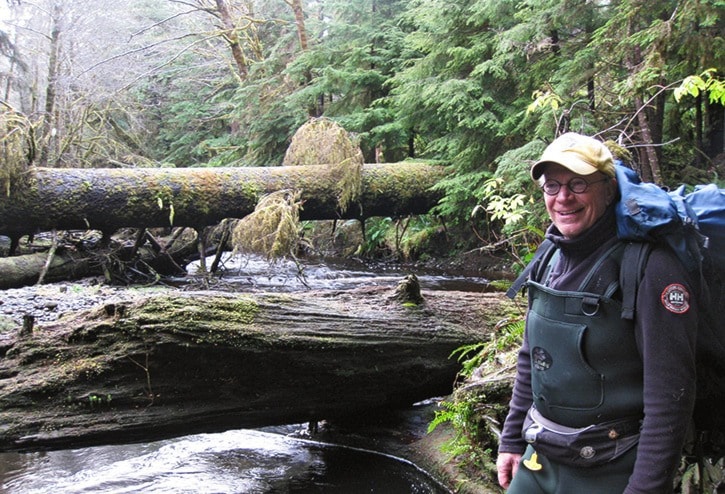Build it, and they will swim.
Volunteers with the Sandspit Salmon Enhancement Society hope to completely rebuild the hatchery near Alliford Bay by spring.
Thanks to a $30,000 grant from Gwaii Trust, by February the non-profit hatchery and stream-keeping group plans to replace the open trough building that was badly damaged last winter.
“A huge rotten hemlock tree came right through the roof,” says Neil Goodwin, vice-president of the society.
“It fell off the hillside, went right through the building, and did a whole bunch of damage to the aluminum troughs.”
Goodwin said the storm damage was really the last straw — the hatchery’s main incubation building is about 30 years old and is nearly unusable due to mould.
The society hopes to get a matching grant from the Pacific Salmon Foundation that will allow them to replace it by March or April, and to install a modern water system inside that is similar to the one at the Hecate Streamkeepers hatchery in Queen Charlotte.
This year, the hatchery has a limited run of about 10,000 Coho eggs, said Peter Grundmann, the society president and a long-time hatchery volunteer. The Alliford Bay hatchery has often been used to raise four times that number.
In recent years, fry from the hatchery have been released mainly into Sachs and Haans Creeks, but once it’s rebuilt it could support other fish species and also provide enough fish for smaller creeks such as Baxter, Blaine and Piper.
“No one really knows what the fish populations in those creeks are,” said Goodwin, noting that the society plans to get more people involved in fish counting and stream-keeping projects such as shoring up creek bed vegetation and making slow-current spots for juvenile salmon.
A fishing guide who moved to Sandspit 10 years ago, Goodwin gave credit to Peter Grundmann and others for keeping the Alliford Bay hatchery afloat.
Growing up on Vancouver Island, Goodwin first got involved in hatchery and stream-keeping work on the Puntledge, Trent, Oyster, and Tsolum Rivers.
The Tsolum in particular was badly damaged by leaching from an iron-ore mine, he said, which killed its entire run of fish.
“We used a lot of the side channels as spawning channels and kept our fingers crossed that fish were going to repopulate the tributaries,” said Goodwin.
Fellow society director Gary Thomas also got his start on Vancouver Island, where he founded the Tofino Salmon Enhancement Society.
“Essentially, with all the development that was going on there, I realized that the planning department really had nothing on the books for protection of riparian areas,” he said, adding that it wasn’t long before Tofino “went crazy” building new resorts and subdivisions.
That change prompted Thomas to move to Shearwater, where he continued to do stream-keeping with some of his 65 fellow residents on Denny Island.
Thomas enjoys telling people that he moved to Sandsipt a year ago “for all the amenities,” but he was also lured by the saltwater fly-fishing.
“It’s nirvana for me here,” he said.
Founded last year, the Sandspit Salmon Enhancement Society has five directors and receives technical help from Pat Fairweather of Fisheries and Oceans Canada.
Goodwin said several more Sandspit residents have expressed interest in volunteering with the group once the new hatchery is up and running.
“There’s quite a few young families here, and some of the parents grew up here and used to be involved in the original hatchery when it first got started,” he said.
“They have great memories of doing that, and we’ve heard from quite a few that they’d like to get their kids involved.”
For more information or to volunteer, visit sandspitsalmonenhancementsociety.org.
